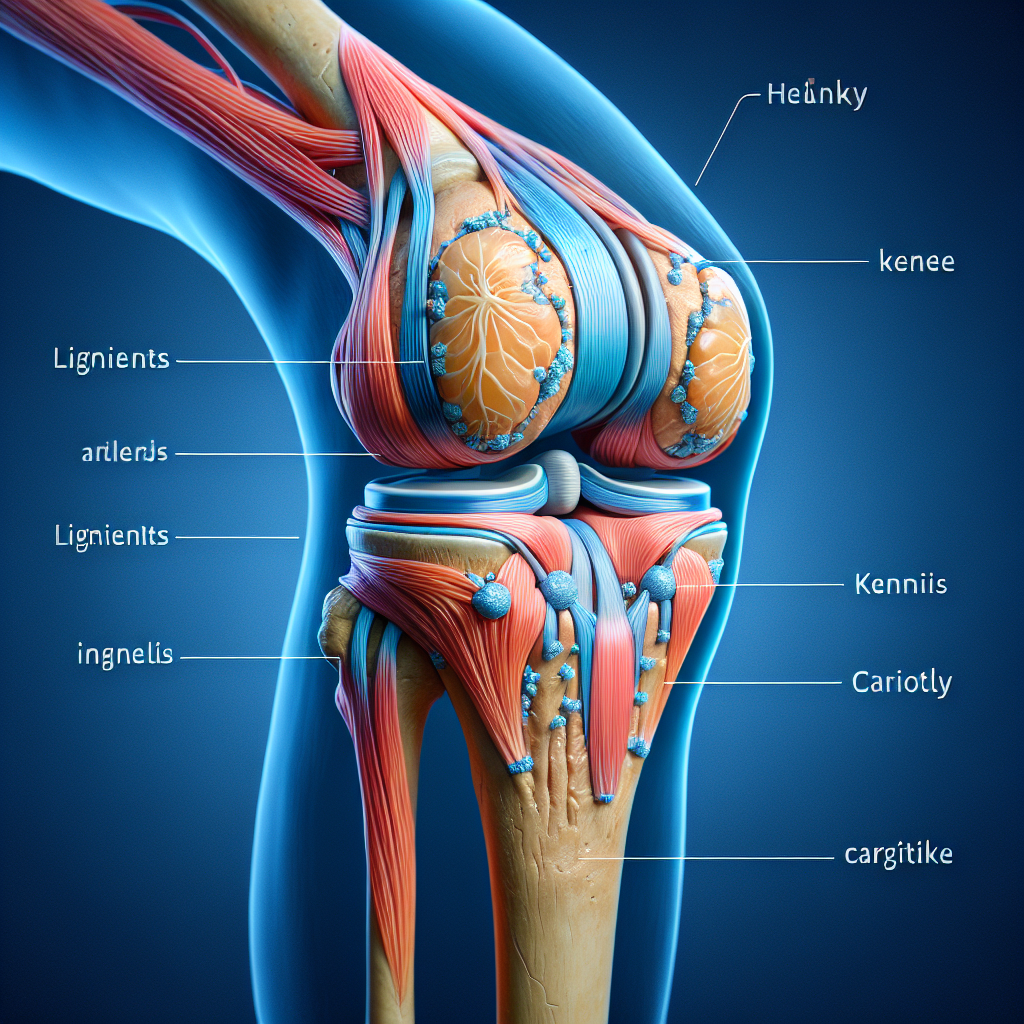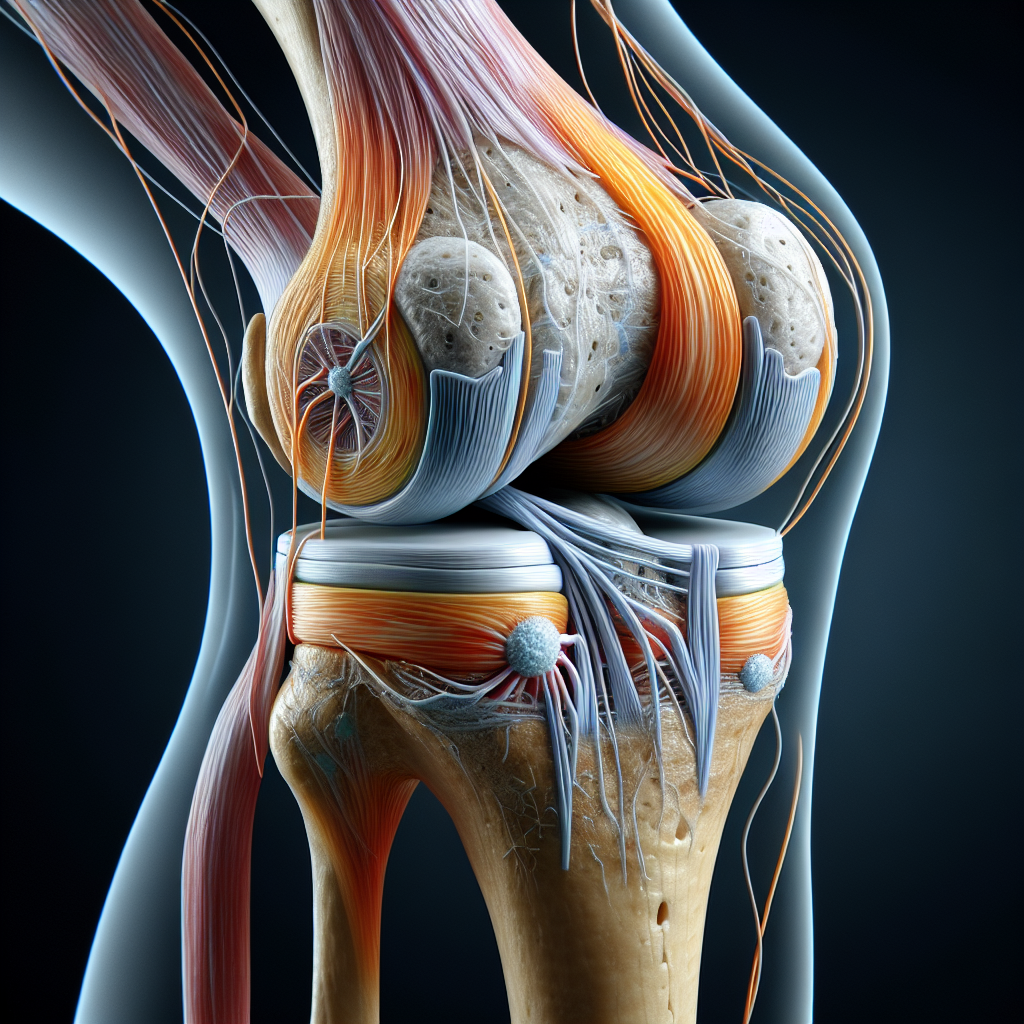
Recovering From Knee Ligament Cartilage And Meniscus Injuries With Orthopedic Injury Doctor Houston
Injuries to the knee can disrupt normal routines and diminish quality of life. Engaging with an orthopedic specialist in Houston is necessary for effective rehabilitation.
Early assessment plays a significant role in establishing an appropriate treatment strategy.
Rehabilitation approaches depend on the intensity of the injury and can encompass both nonsurgical and surgical techniques.
Physical therapy often serves as a fundamental part of regaining strength and mobility. Recognizing various injury types, along with the available treatment options, empowers patients to make informed choices regarding their recovery.
A customized plan enhances recovery and accelerates the healing journey.
Click here to learn more about: orthopedic injury treatment.html
Understanding Knee Ligament Injuries
Injury to ligaments in the knee often leads to significant mobility issues and affects one’s overall quality of life. Such incidents frequently involve the anterior cruciate ligament (ACL), posterior cruciate ligament (PCL), and the medial and lateral collateral ligaments (MCL and LCL).
The extent of the damage varies, with some cases necessitating surgical intervention for ligament repair.
Typical triggers include athletic activities and falls that result in trauma.
Symptoms generally manifest as pain, swelling, and compromised joint stability. Timely assessment through physical examinations and imaging tests is vital for establishing an effective treatment strategy.
Seeking assistance from an orthopedic injury doctor in Houston can mitigate the risk of worsening conditions and facilitate optimal recovery. Transitioning into recovery, the focus on rehabilitation is paramount for fully regaining function and returning to daily activities.

Importance Of Rehabilitation For Recovery
Effective recovery from injuries relies heavily on a structured approach that fosters healing. A strong focus on rehabilitation involves tailored physical therapy, which plays a significant role in restoring mobility and strength, especially in sports medicine contexts.
This comprehensive methodology not only aids in recovery but also helps individuals rebuild their confidence.
Attention to pain management is an important element of the rehabilitation process.
Individuals learn body mechanics that contribute to effective pain relief and help minimize the risk of re-injury. Education during this phase equips patients for safe physical activity, thereby making injury recovery more efficient and sustainable.
Those seeking specialized care should consult an Orthopedic Injury Doctor in Houston, who can guide them through personalized rehabilitation plans.
| Aspect of Rehabilitation | Importance |
|---|---|
| Tailored Physical Therapy | Restores mobility and strength |
| Pain Management | Minimizes risk of re-injury |
| Education on Body Mechanics | Equips patients for safe physical activity |
| Consultation with Orthopedic Injury Doctor | Provides personalized rehabilitation plans |
How Orthopedic Specialists Assess Injuries
Evaluating injuries involves a comprehensive approach that orthopedic specialists are well-equipped to handle. They start by gathering a detailed medical history, followed by a thorough physical examination focusing on pain, swelling, and mobility exercises.
Utilizing imaging techniques like X-rays and MRIs aids in identifying damage and informs treatment decisions.
Functional assessments are conducted to evaluate range of motion and strength training, ensuring a holistic view of the injury.
These factors are essential in formulating targeted therapy plans. The orthopedic injury doctor in Houston often collaborates with other specialists, enhancing recovery strategies and optimizing patient outcomes.
Transitioning into rehabilitation, understanding the role of physical therapy becomes paramount for ongoing recovery.
What Is The Role Of Physical Therapy
The journey towards recovery from orthopedic injuries is fundamentally shaped by therapeutic interventions. Customized treatment plans are designed to cater to the unique requirements of each individual, utilizing methods like massage therapy to enhance healing.
These plans often incorporate exercise regimens aimed at restoring strength and mobility, which are pivotal postoperatively.
Techniques such as ultrasound therapy help to manage inflammation and promote recovery.
Collaboration with an orthopedic injury doctor in Houston ensures that treatment remains coordinated and effective. Patients are empowered through education, gaining insights into their rehabilitation journey, which is essential for a smooth transition back to daily life.
Recovery from Orthopedic Injuries
- Customized treatment plans enhance healing by addressing individual needs.
- Exercise regimens are essential for restoring strength and mobility after surgery.
- Ultrasound therapy effectively manages inflammation and promotes recovery.
- Patient education is crucial for a smooth transition back to daily life.
Recovery Timeline After Knee Surgery
Recovery after knee surgery involves a structured approach that facilitates optimal healing and rehabilitation. Initial Recovery Phase (Days 1-14) focuses on post-operative care, where knee immobilization is critical to prevent strain.
Patients should prioritize rest and apply ice to manage swelling effectively.
During the Strength and Mobility Phase (Weeks 2-6), gentle rehabilitation exercises are introduced.
Proprioception training becomes important as individuals gauge their pain levels and swelling, ensuring a thoughtful approach to recovery.
As the Advanced Rehabilitation Phase (Weeks 7-12) begins, more challenging physical therapy routines are implemented, focusing on functional rehabilitation to enhance mobility and daily activities.
Progress during this stage is vital for assessing improvements in physical capabilities. The rehabilitation program includes arthroscopy, knee immobilization, proprioception training, and functional rehabilitation.
Techniques For Swelling Reduction
Effective management of fluid accumulation helps facilitate a smooth recovery journey following orthopedic concerns. The foundational R. I. C. E.
Approach incorporates rest, ice, compression, and elevation.
Rest minimizes movement and prevents further issues associated with surgical intervention.
Using ice cools the affected area while reducing inflammation. An effective compression technique utilizes appropriate bandaging to limit fluid buildup, while elevation aids in drainage of excess fluids.
Alongside these methods, physical therapy techniques, including manual lymphatic drainage and targeted therapeutic exercises, contribute significantly to alignment correction, which is crucial for progressing toward weightbearing exercises. Consulting with an Orthopedic Injury Doctor in Houston can provide additional guidance tailored to individual recovery needs.
Transitioning to pain management strategies becomes important as healing continues, ensuring a holistic approach to recovery.
Effective Strategies For Pain Management
Finding relief from discomfort is often a multi-faceted endeavor, requiring strategies that encompass the full spectrum of the issue at hand. Distinguishing between various pain types plays a pivotal role in the development of effective therapeutic modalities.
Acute and chronic pain represent two distinct categories, each influencing the selection of appropriate treatments.
For instance, integrating physical therapy into a rehabilitation plan can significantly enhance knee flexion and restore function following an injury.
Non-pharmacological approaches, such as the application of heat and ice therapy, provide additional avenues for relief. Cognitive-behavioral therapy can reshape pain perception, contributing positively to the recovery journey.
Customizing these methods to fit individual requirements is particularly beneficial, especially with guidance from an orthopedic injury doctor in Houston.
Exploring Cartilage Restoration Options
When joint issues arise due to cartilage damage, timely intervention is key to maintaining overall joint health. Various techniques exist to promote healing, helping to alleviate discomfort and enhance mobility.
Microfracture surgery, for instance, stimulates the growth of new cartilage and requires a thorough recovery timeline for optimal results.
Another option, osteochondral grafting, involves relocating healthy cartilage from a different area to restore function.
Stem cell therapy represents an innovative approach that is gaining traction. Regardless of the chosen method, follow-up care is imperative, and physiotherapy plays a significant role in the recovery process.
Consulting an orthopedic injury doctor in Houston can provide valuable insights as you explore the best restoration strategy for your specific needs.
Joint Health Interventions
- Microfracture surgery can lead to the formation of new cartilage, enhancing joint function.
- Osteochondral grafting helps restore joint functionality by transferring healthy cartilage from another area.
- Stem cell therapy is an emerging treatment that shows promise in regenerating damaged cartilage.
- Follow-up care and physiotherapy are essential for maximizing recovery and ensuring long-term joint health.
Benefits Of Strength Training PostInjury
Recovering from an injury requires a structured approach that significantly benefits individuals seeking to regain their strength. Structured rehabilitation often incorporates specific exercises that are vital for enhancing muscle endurance and promoting overall recovery.
With a program designed to meet unique needs, patients can effectively focus on the affected areas and foster improvement.
An orthopedic surgeon may recommend these strengthening exercises to enhance bone health, ensuring long-term stability and mobility.
Consistent practice not only uplifts joint function but also mitigates the risk of developing new injuries. Patient education on how to maintain a regimen can lead to improved joint health, contributing to resilience against arthritic conditions.
How To Improve Joint Stability.
Maintaining optimal function in your joints is crucial for an active lifestyle and reducing the risk of injury.
A robust approach to enhancing stability encompasses tailored recovery strategies aimed at strengthening muscles and improving flexibility.
Regular consultations with an orthopedic injury doctor in Houston can lead to a thorough biomechanical assessment, pinpointing any underlying weaknesses.
Employing effective bracing techniques during physical activities can also facilitate tissue healing and support recovery. Adhering consistently to a personalized exercise regimen will foster steady progress over time.
Taking proactive steps is essential to maintain joint health and prevent future setbacks.
Treating Herniated Discs And Back Conditions With Orthopedic Injury Doctor Houston
Treating Rotator Cuff And Shoulder Injuries With Orthopedic Injury Doctor Houston
